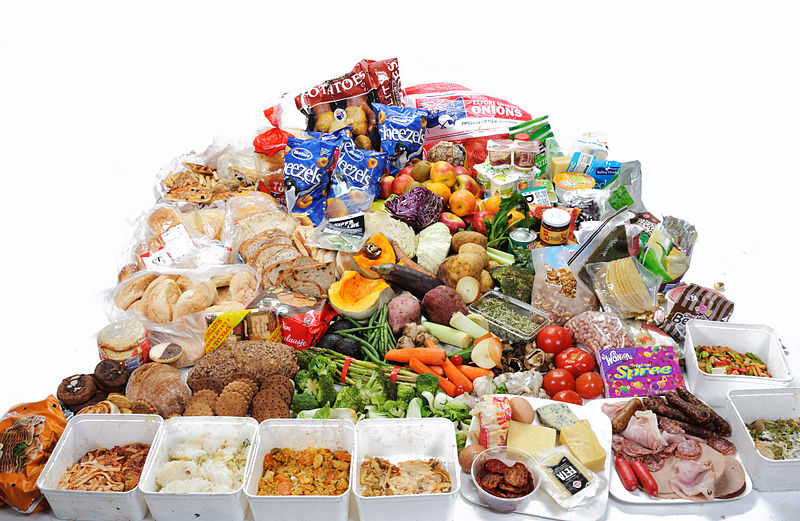
Our weekly household waste is often filled with foods that still edible. In Canada, 40 per cent of the food we produce nationally ends up in the garbage. (Photo courtesy of Wikimedia Commons/Love Food Hate Waste)
Written by Vanessa Santilli-Raimondo for The Catholic Register
It is shocking to learn that $31 billion worth of food is wasted in Canada every year. Looked at another way, what Canadians throw away is enough to feed one quarter of the world’s 800,000 hungry people, according to the United Nations.
We are a wasteful nation. About 40 per cent of food produced nationally is thrown into the garbage, according to the Toronto Food Policy Council. Half of this waste is due to shortsighted habits of consumers.
For instance, the baby spinach packaged in the too-big container I didn’t get around to finishing, or the bananas that became slightly too ripe for my liking. That may not sound like much, but a little bit wasted every day adds up to a lot of waste over the weeks and months.
How much waste? Canadian households waste, on average, $28 worth of food each week. That’s almost $1,500 per household, almost enough to feed eight starving people for an entire year, the U.N. tells us.
Pope Francis has said that “throwing away food is like stealing from the table of the poor and hungry.” He makes a sobering point as, locally, food bank usage is on the rise, helping more than 850,000 Canadians every month, according to a study from Food Banks Canada.
While food waste happens all along the food supply chain (from suppliers to retailers to consumers), it’s important to be conscious of the waste that each of us is personally responsible for — and to work to reduce it. As Laudato Si’ reminds us, we are called to be stewards of the Earth, not reckless consumers.
Changing old habits doesn’t have to be difficult. In my personal quest to become less wasteful, I’ve come across several helpful tips, such as this one from the website of the United States Conference of Catholic Bishops: “The next time you make a recipe that can be easily frozen, make a double batch and donate one to your local soup kitchen.”
This tip can be modified easily to help reduce food waste whenever it looks as if you’re going to have groceries that won’t get used up. If you have too much food, make plans to share it with those less fortunate. Locally, the Good Shepherd Ministries runs a “Provide-a-Meal” program in which volunteers commit to donating one casserole per month. Over the course of the year, that adds up to more than 100,000 main course servings.
Or if you have food that’s nearing the end of its shelf life, use your imagination and find other ways to use it. For example, leftover bread can be turned into breadcrumbs; overly ripe bananas can be baked into banana bread or chopped into a smoothie; lemons that are starting to shrivel can become a homemade salad dressing, roasted with a meat dish or juiced into lemonade. Get creative and keep yourself interested in foods that, although no longer at peak freshness, are still quite edible. Continue reading
